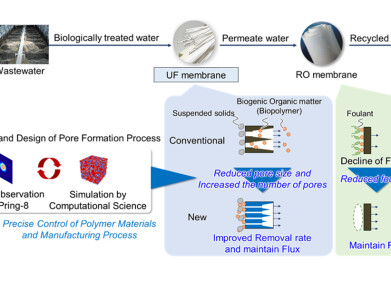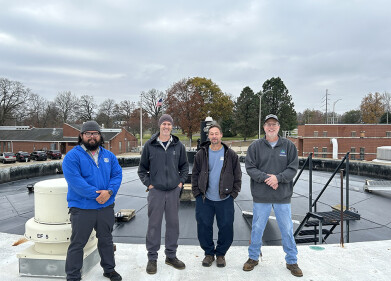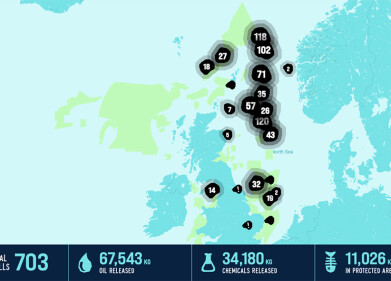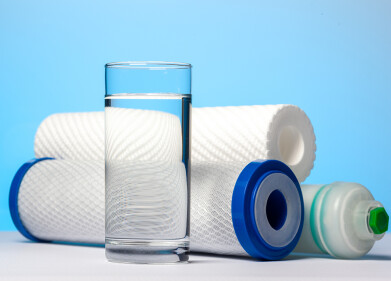Water/Wastewater
Clean and Green Brewery Points the Way to Water and Energy Gains for Food and Beverage Industry
Nov 08 2011
A water recovery plant designed to target world’s best-practice water reuse standards in the food and beverage industry has exceeded its designers’ high expectations in its first year of service at the new Bluetongue brewery in Australia.
The waste water treatment and green energy plant at the $120 million Pacific Beverages’ Bluetongue Brewery in NSW also provides valuable renewable energy for the brewery, reducing its dependence on fossil fuels and ultimately cutting overall energy needs by 15 per cent.
The plant - engineered by Australia’s CST Wastewater Solutions in partnership with Global Water Engineering –has achieved all the high environmental performance targets set by Pacific Beverages, a SABMiller/Coca Cola Amatil joint venture, says CST Wastewater Solutions Managing Director Mr Mike Bambridge.
The plant was also a finalist in two categories of this year’s Engineering Excellence Awards, Sydney 2011, conducted by Engineers Australia, which attracted a record field of more than 90 entrants. Bluetongue was a finalist in the Environmental and Heritage category and the products, manufacturing, facilities and processes category.
Pacific Beverages designed the plant to ultimately have an annual capacity of 150 million litres, while targeting a reduction in water usage to 2.2l / l litres of beer produced. This figure is amongst the best in the world and certainly well above the global average of 4 - 5 litres of water to every one litre of beer, says the CEO of Pacific Beverages Mr Peter McLoughlin.
The GWE anaerobic technology plant employed at the plant produces sufficient green energy (methane) from its closed anaerobic reactor to power a designated steam boiler and cut the brewery’s overall energy consumption by about 15 per cent. This equates to about 300,000 Mj
Mr Bambridge says this the plant indirectly reduces the brewery’s carbon footprint by reducing the brewery’s demands on fossil fuels and the electricity needs for wastewater treatment by using energy-friendly anaerobic pre-treatment technology in which GWE is a world leader.
“And the plant produces treated effluent to be safely reused as process and cleaning water within the brewery, reducing by ca. 50 per cent the need for fresh water, thereby greatly contributing to reducing the amount of water typically used to produce a litre of beer.”
Highlights of the system’s performance in its first year of service include:
1. The COD removal rates over the anaerobic reactor have consistently been above the design of 85% removal. The same for the biogas production which has been better than theoretical production rates. ca. 1,436 Nm3/d at 80% CH4 at average loading (ca. 2,157 Nm3/d at max loading)
2. The performance of the wastewater plant has enabled Pacific Beverages to be on target to meet its goal to be world’s best practice for breweries in water management by using only 2.2 litres of water for each litre of beer produced
3. This WWTP has leading edge wastewater technologies including anaerobic pretreatment, MBR (Membrane bioreactor) and RO (reverse osmosis) as well biogas reuse. It is a model plant for the future for companies in the food and beverage industry.
The design philosophy has been to treat the waste water as a resource from which water and energy can be recovered in addition to reducing the site’s carbon foot print.
“This is a landmark achievement of water conservation and green energy production, achieved by combining to achieve the latest versions of advanced and reliable technologies available globally,” said Mr Bambridge. “It demonstrates the technology’s practicality for extensive use not only throughout the Australian food and beverage sector - which involves more than 20,000 companies – but also globally, says Mr Bambridge, whose company employed the latest technologies from a range proven globally by Global Water Engineering, headed by GWE CEO Mr Jean Pierre Ombregt.
GWE has built successfully more than 250 plants producing biogas as part of the industrial effluent clean-up system, of which more than 75 were supplied with subsequent biogas utilization systems for clients worldwide. Users of GWE technologies extend from the Bluetongue Brewery to global concerns such as Budweiser, Chang, Carlsberg, Coca Cola, Corn Products Int’l., Danone, Fosters, Heineken, Interbrew, Kraft, National Starch & Chemicals, Nestlé, Pepsi Cola, SAB-Miller, San Miguel, Singha, Sunkist and Tsingtao.
Many of the latest installations use advanced technologies – including anaerobic pre-treatment of water and aerobic polishing – to enhance water discharge purities while converting waste to methane to be burned to power boiler and hot water systems, for example, or to power generators and permanently replace fossil fuels. On average the removal efficiency of GWE’s anaerobic wastewater treatment installations is as high as 90-95%, easily bringing the organic load down to regulatory discharge standards for most types of wastewater, says Mr Ombregt.
Besides the economic advantages of GWE’s anaerobic wastewater treatment, there is also a clear environmental advantage in significantly reducing factories’ carbon footprint. This is done not only by supplying renewable energy from the closed anaerobic reactor, thus reducing or even eliminating reliance on fossil fuels, but also by replacing traditional, open, methane-producing lagoons, and by replacing power-consuming, sludge-producing aerobic WWTPs.
“The concept of using wastewater to create green energy is much more widely applicable than often realized. Any factory with a biological waste stream or wastewater with high COD (Chemical Oxygen Demand) can easily use this model to generate energy,” says Mr Ombregt.
Events
Mar 18 2025 Expo Santa Fe, Mexico
Mar 18 2025 Moscow, Russia
Mar 19 2025 Manila, Philippines
Mar 20 2025 Guangzhou, China
Mar 24 2025 National Harbour, MD, USA















